Eric The Red West 2016 week 3
Dinosaur Dreaming at Eric the Red West 2016
Week 3: 20th-27th February
The third and final week of the dig began with the annual "Friends of Dinosaur Dreaming Day" on Sunday 21st February. Since the foundation of the FODD in 1997, the special "Friends Day" was traditionally held at the Flat Rocks site near Inverloch, but with the move to the Eric the Red West site it was decided that perhaps the Friends would like to visit this new site, even though it was much further from Melbourne and not as easily accessible. Twenty "Friends" turned up to join the Dinosaur Dreaming crew at Bimbi Park and were welcomed by Dinosaur Dreaming leading researcher Dr Tom Rich. From there they were directed to the Eric the Red West site where they were met by local historian and Dinosaur Dreamer Darren Bellingham, who gave them a tour of the site and explained the cultural and historical significance of the area. Resident Dinosaur Dreaming sedimentologist Alan Tait then explained the history and formation of the sandstone rocks in which the fossils were being found. The Friends were then invited to observe the rest of the crew breaking the rock and were on hand when fossil bones were found. There was great excitement when a larger than usual ornithischian dinosaur jaw was found. Only part of the dentary (bone in the lower jaw containing the teeth) was exposed so it was impossible to say how large the bone was. Removal of the surrounding rock will allow a better estimation of the size of the jaw, but to date the largest ornithopod dentary to be found in the Victorian Cretaceous rocks was found at Elliott River, a few kilometres north of the Eric the Red West site. The Elliott River dentary is just over 80mm long, which suggests that the complete lower jaw was over 100mm long after including the predentary bone and the post-dentary bones.
After the excitement of Friends Day the crew settled down to a week of mixed weather. One day was lost because of heavy rain but they still managed to nudge the final tally of catalogued bones to 520, which is a marvellous effort over a three-week period. Some of the more notable bones found in the third week included some well-preserved dinosaur limb bones, a few shapely vertebrae and a very handsome dinosaur coracoid (part of the shoulder girdle).
On the last day of the dig the excavation area was covered over with the sand that had been removed on the first day. As the dig site is situated just above the high tide mark it is rarely disturbed by the in-coming tide so it is necessary to cover the fossil layer to protect it from erosion until the next annual dig.
All the hard won fossil bones and teeth were packed up and delivered to the Vertebrate Palaeontology Preparation laboratory at Museum Victoria in Melbourne, where they will be carefully unwrapped, examined and prepared over the next year or so. Finding the fossils is actually the easy part - preparation of each fragile bone takes a lot of patience, time and a steady hand. It may be a number of years before some of the bones get to see the light again.
I would like to congratulate all the volunteers who took part in the Eric the Red West 2016 field season. Conditions were not always ideal, as in any dig, but the crew handled themselves with enthusiasm and good humour. Images of many smiling faces proudly displaying their treasures can be found on the Dinosaur Dreaming blogsite, including one special person who made sure that all the fossils were carefully wrapped and labelled. Wendy White has been a member of the Dinosaur Dreaming team for 15 years and has made herself indispensable for most of that time. This year she generously took the time to send me regular updates of what was happening at the dig and photos of some of the more interesting fossils, which I was then able to forward onto readers of these reports. I was delighted to see that she found a tooth in the last week of the dig, which anyone on the dig will know is a big thrill. Without her comments and images these reports would have been much shorter and nowhere near as interesting. Thank you Wendy.
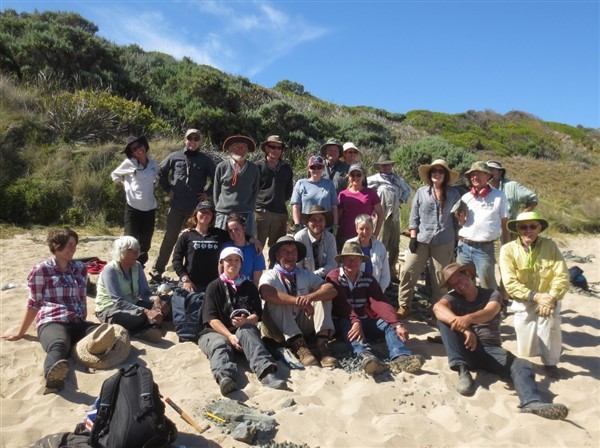
Eric the Red West 2016 Week three crew.
Photographer Wendy White.
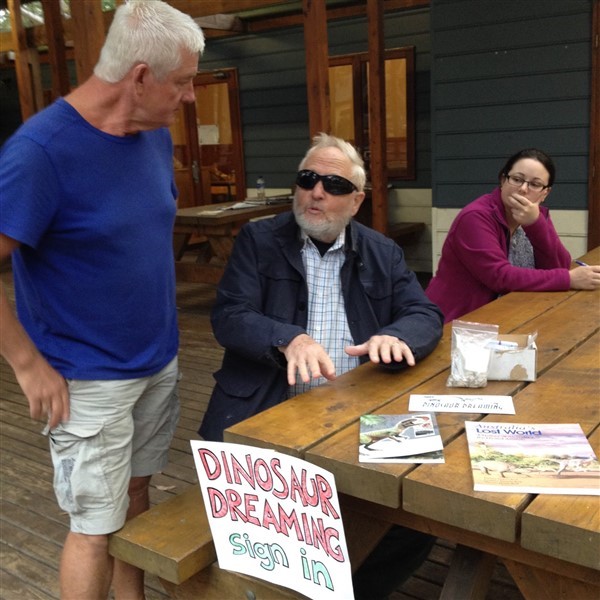
Tom Rich talking to one of the Friends of Dinosaur Dreaming on "Friends Day".
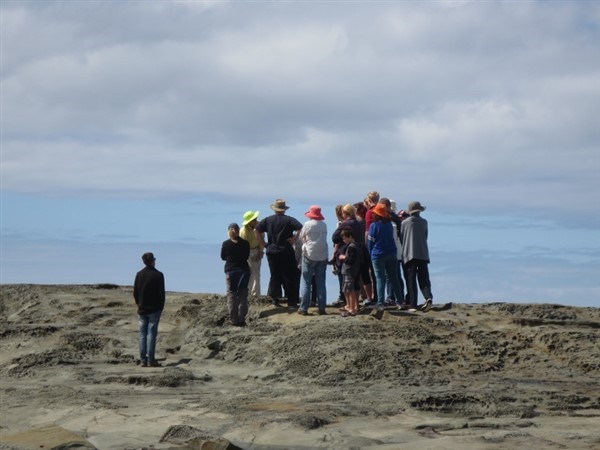
Sedimentologist Alan Tait talking to a group of Friends on Friends Day.
Photographer Wendy White.
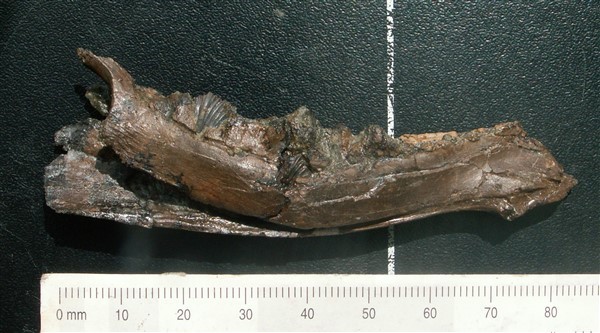
Image of the Elliott River ornithopod dentary, similar in size to the one found on Friends Day at the site.
Photographer: Lesley Kool.
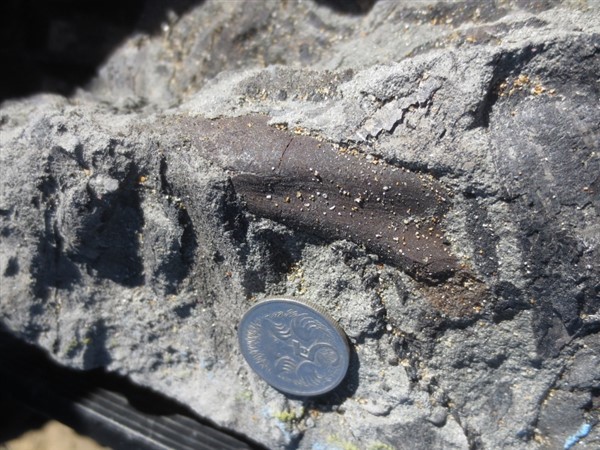
Dinosaur limb exposed in the rock.
Photographer: Wendy White.
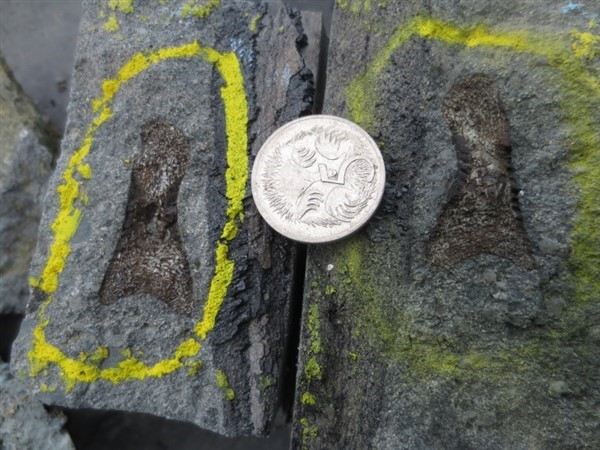
Two halves of a small dinosaur toe bone.
Photographer: Wendy White.
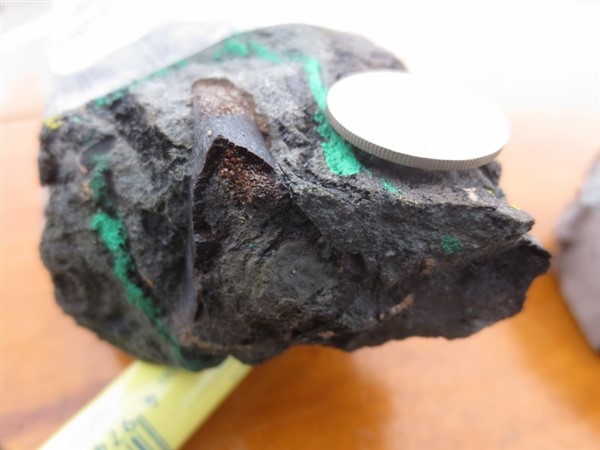
Cross-section through the end of a dinosaur limb bone.
Photographer: Wendy White.
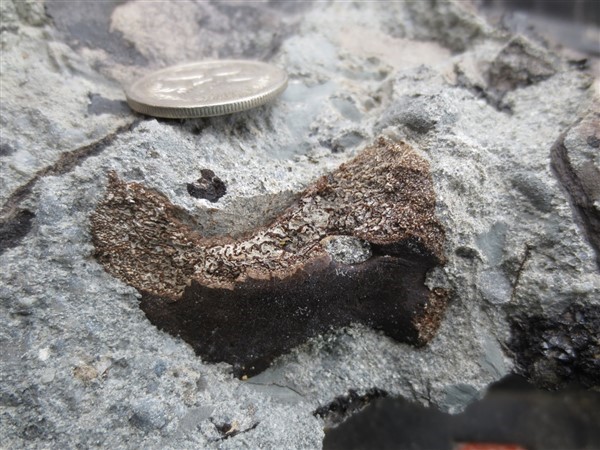
The initial identification of this bone is a dinosaur coracoid - one of the bones in the shoulder girdle.
Photographer: Wendy White.
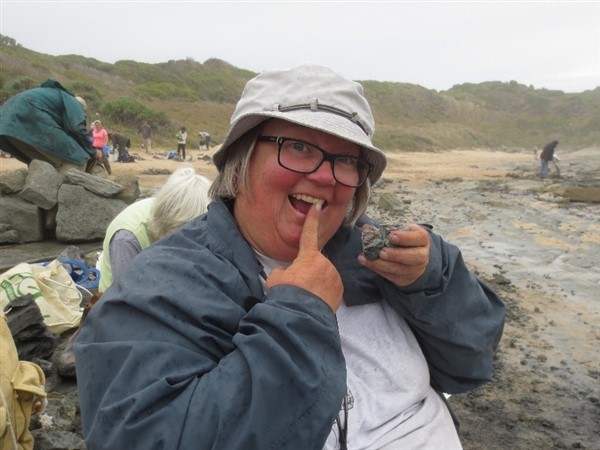
Wendy White proudly displaying her tooth and fossil tooth.
Courtesy of Wendy White.
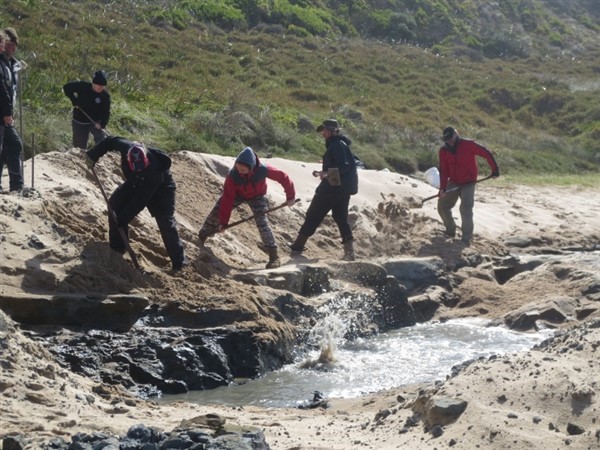
The volunteers shovelling sand over the excavation site to preserve it from erosion.
Photographer: Wendy White.